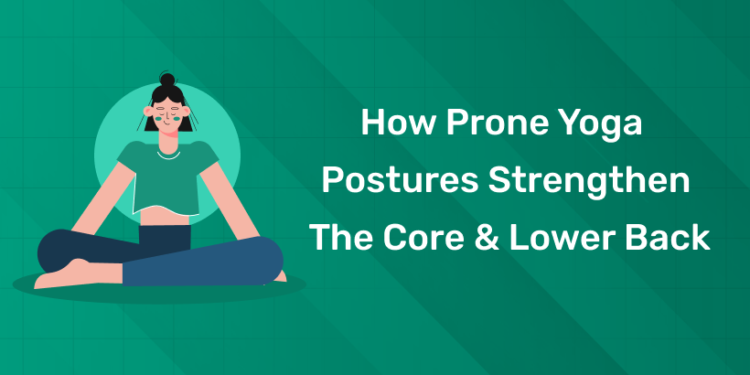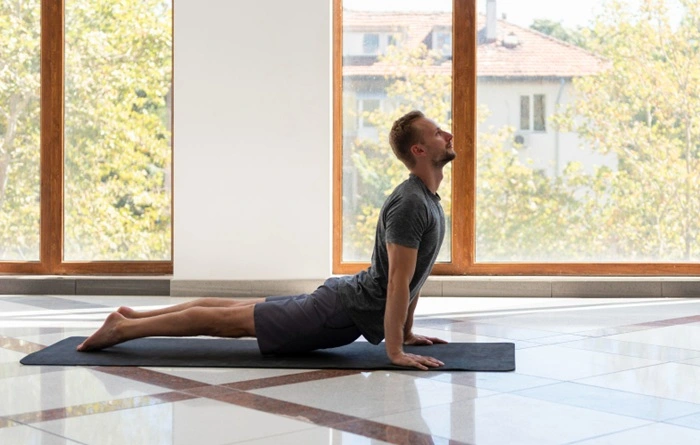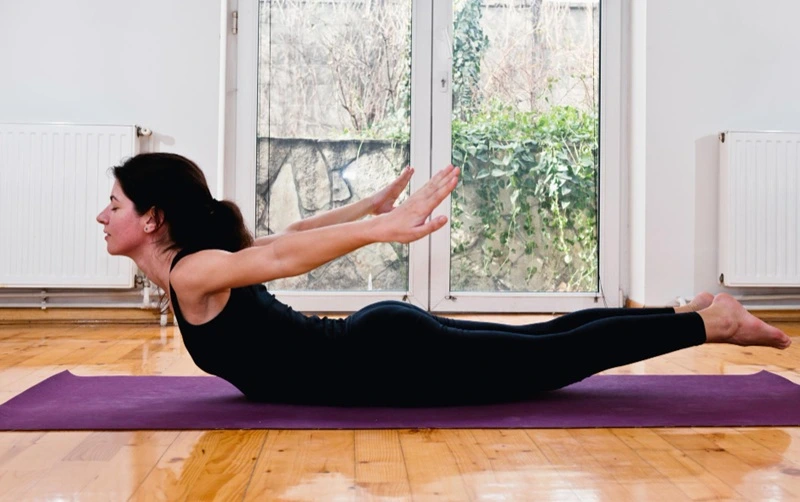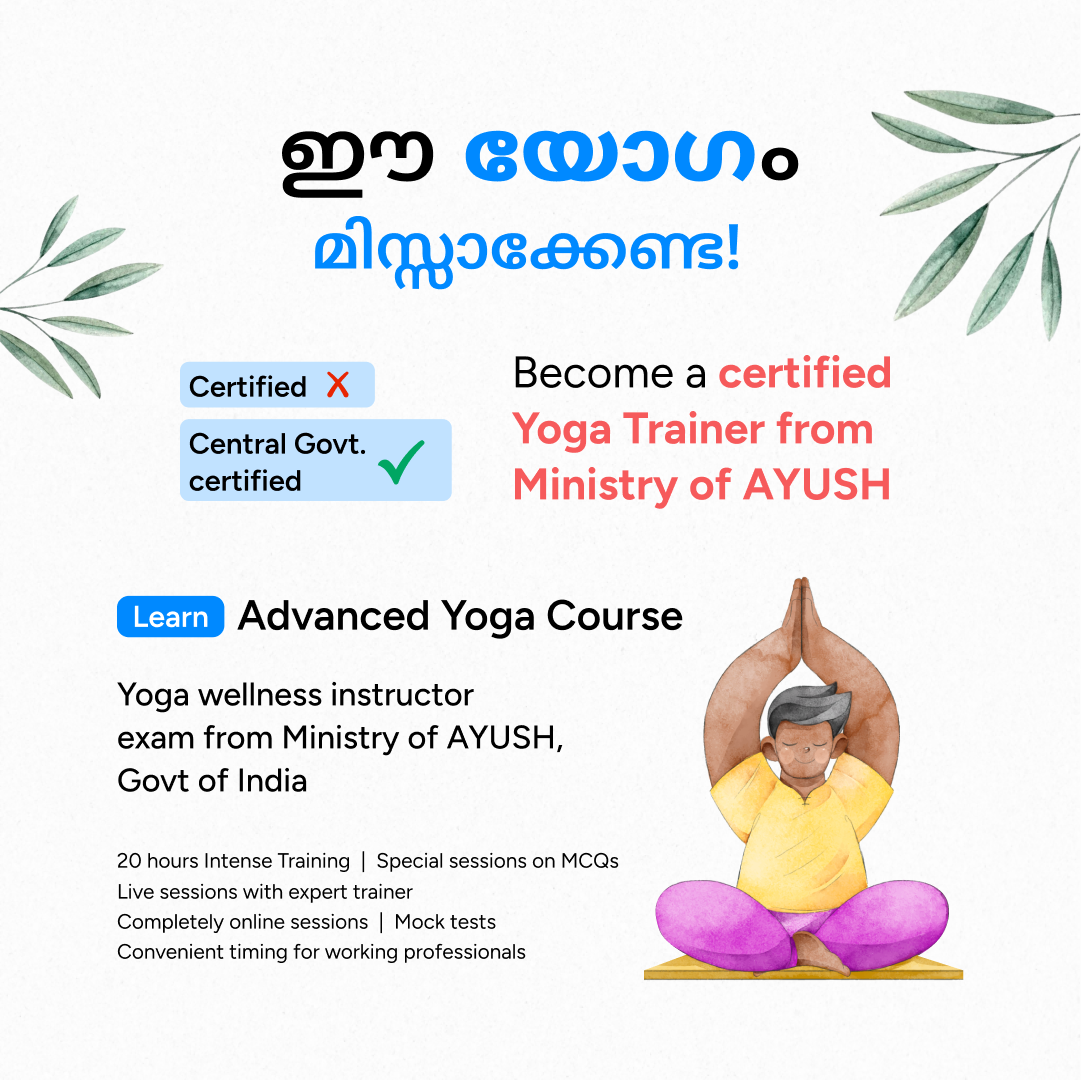Table of Contents
In our screen-dominated world where we spend hours sitting, bending forward, or leaning over screens a strong core and healthy lower back have never been more important. Among the many ways to build that strength and resilience, prone yoga postures (where the body faces down) are a powerful tool. These poses engage the back, glutes, hamstrings, core stabilisers, and spinal muscles in a unique way that corrects common imbalances and supports movement.
Whether you’re a regular yoga practitioner looking to relieve back pain and strengthen your postural muscles or an aspiring yoga teacher wanting to learn sequencing, alignment, and progression, the knowledge and practice of prone postures is key. In this blog post, we’ll explore why prone postures matter, how they work for the core and lower back, which ones to do (with cues), precautions, modifications, and importantly, how your professional training through the Entri Yoga TTC aligns with incorporating these tools into your teaching.
Get Confident! Join Our Yoga Teacher Training Course!
Why Prone Postures? The Case for Face‑Down Yoga Moves
Modern risk factors and why prone postures help
- The typical lifestyle involves long periods of sitting, forward‑leaning posture (e.g., typing at a desk, driving) and minimal back‑extension movement. Over time this can lead to weak back extensor muscles (erector spinae, multifidus), tight hip flexors, and reduced core engagement.
- Prone postures offer a deliberate counterbalance; they place the body in a position of extension (face‑down, lifting chest/legs), which engages posterior chain muscles, activates core stabilisers, and improves spinal alignment.
- Scientific research supports the value of yoga in improving lower‑back function. For example, a meta‑analysis found yoga helped reduce functional disability in chronic low back pain.
- More specifically, prone and supine asanas (lying face‑down or face‑up) have been investigated for their beneficial effect on back strength. One study focused on “selected prone and supine asanas” and found they increased back strength.
- Moreover, understanding core musculature and how yoga activates trunk and hip muscles is increasingly backed by anatomical research.
What happens in your body during a prone posture?
- Spinal extensor activation: When you lift your chest or legs from the floor (in a prone pose), the spinal extensors (erector spinae, multifidus) engage to extend the spine and stabilise the vertebrae.
- Core stabiliser engagement: Even though you’re face‑down, your anterior core (transverse abdominis, internal obliques) and hip flexors help stabilise your pelvis and rib‑cage so that extension is safe and balanced. As Harvard Health notes: yoga helps strengthen the back muscles and core stabilisers which support spinal health.
- Glute and hamstring activation: Many prone poses also engage the glutes and hamstrings when you lift your legs which helps correct weak glute patterns common in sedentary lifestyles.
- Improved posture and counter‑action of sitting: Because the chest lifts, shoulders open, and back extends, prone postures actively reverse forward‑hunched posture, reducing compression in the lumbar region.
- Mind‑body integration: Prone postures encourage awareness of alignment, muscular engagement, and breath control important both for practitioners and for teaching applications.
Key Prone Postures That Strengthen Core & Lower Back
1: Which of these is the primary goal of yoga practice?
Let’s look at a few of the most effective prone yoga postures. For each one, I’ll provide a brief description, key alignment cues, benefits for core/lower‐back and teaching notes.
1. Bhujangasana (Cobra Pose)
Description: Lie face‑down, legs extended. Place palms under shoulders; lift the chest off the floor, shoulders down, spine extending.
Alignment cues: Press tops of feet down; engage glutes lightly; draw shoulders back and down; keep pelvis grounded; gaze forward or slightly up.
Core/lower‑back benefit: Activates back extensors, opens chest and hip flexors, engages anterior core to stabilise spine.
Teaching note: This is a foundational prone back‑bend excellent for beginners and intermediate classes. Emphasise safe extension (not compression of lumbar).
2. Salabhasana (Locust Pose)
Description: Lie prone, lift chest and legs off the floor (arms may be alongside or reaching back).
Alignment cues: Press tops of feet into mat; Inner thighs lift; tailbone draws toward heels; shoulders away from ears; neck neutral.
Core/lower‑back benefit: Strong posterior chain activation (glutes, hamstrings, back extensors) plus core stability for spine. Research highlights that prone postures like these improve back strength.
Teaching note: Great for progressing from easier back‑bends. Use for intermediate class or as part of core/strength block.
3. Makarasana (Crocodile Pose)
Description: Lie on stomach, elbows under shoulders, forearms parallel, head may rest on hands. Sometimes chest and legs lifted.
Alignment cues: Forearms grounded; spine elongated; allow chest to hover; legs relaxed or lifted lightly; breathe.
Core/lower‑back benefit: Helps release tension in lumbar region, supports spinal lengthening and acts as a transitional pose between relaxation and active extension.
Teaching note: Excellent restorative prone posture. Use when students need to release after strong back‑extension or as warm‑up.
4. Combination/Flow of multiple prone postures
An effective sequence might move from a gentle lift (Makarasana) → Cobra (Bhujangasana) → Locust (Salabhasana) → rest (Child’s Pose). This progressively increases engagement and strengthens the core and posterior chain.
Become a Certified Yoga Instructor
Yoga Teacher Training Course by Entri App: Master authentic yoga techniques, earn certification, and build a successful career as a professional yoga instructor.
Join Now!How to Integrate a Prone‑Focused Core/Lower Back Routine
Whether you’re practising yourself or planning a class as a teacher, here’s a framework:
For personal practice
- Warm‑up for 5‑10 minutes with gentle mobilisers (Cat‑Cow, Child’s Pose, pelvic tilts) to prepare spine and core.
- Then perform 2‑3 rounds of prone postures: 1) Makarasana (30‑60 s), 2) Bhujangasana (15‑30 s hold, 2‑3 reps), 3) Salabhasana (10‑20 s hold, 2 reps).
- After lifts, include a counter‑pose like Child’s Pose or Supine Twist to neutralise the spine.
- End practice with mindful breath work and gentle stretches for hip flexors (since lifting legs tightens hip flexors).
- Frequency: 3‑4 times a week if your goal is core/back strength; integrate into your regular yoga or movement routine.
For teaching or aspiring yoga teachers
- Begin class with preparatory poses (warm‑up spine, hips).
- Introduce prone posture block: cue alignment clearly, demonstrate modifications, and invite students to feel muscle activation.
- Use cue language emphasising core engagement, length in spine, safe lift not over‑arching or “cranking” the back.
- Offer variations: for beginners (less lift, legs supported), for intermediate (full lift), for advanced (longer hold or dynamic movements).
- After the prone block, include counter/balance poses and then transition to standing or seated posture.
- Use prone postures to frame a thematic class such as “Strengthening Posterior Chain & Posture”, or “Desk‑Worker Relief”.
Precautions, Common Mistakes & Modifications
Common mistakes to watch for
- Pulling up with arms only (in Bhujangasana) which shifts work away from back extensors and engages wrong muscles.
- Collapsing low‑back (excess lumbar arch) without stabilising core can increase compression.
- Lifting legs/hips without core engagement (in Locust) leading to lower‑back strain.
- Neglecting breath: Holding breath while lifting creates tension and defeats the purpose.
- Ignoring tight hip‑flexors: since prone back‑extension often tightens hip flexors, neglecting them may cause imbalance.
Precautions & contraindications
- If you have recent lower‑back surgery, a herniated disc, acute spinal injury, seek medical approval before practising prone extensions.
- Pregnancy (especially second/third trimester): prone postures may not be appropriate; use alternatives or props.
- Wrist/shoulder issues (for postures where arms support) are modified by forearms support or reduced lift.
- Severe hip flexor tightness or lower‑back hyperlordosis: take care, consider beginner modifications.
Modifications for accessibility
- Use a blanket under the pelvis/thighs if the lower back is sensitive.
- Lift chest only (not both chest & legs) for a gentler version of Locust.
- For Cobra: keep elbows bent and lift only partway (Half Cobra).
- Leg lifts: keep one leg down while lifting the other (alternating) to build strength progressively.
Why the Entri Yoga TTC Course Is Perfectly Aligned With These Practices
As someone either practising yoga deeply or training to teach others, the Entri Yoga Teacher Training Course offers key advantages that align with incorporating prone postures for core and back strength:
- Anatomy & Physiology modules: You’ll learn how core muscles, spinal muscles, hip flexors and glutes work informed instruction when teaching prone postures.
- Asana Alignment & Pedagogy: The course supports you in cueing alignment, understanding muscle activation and designing effective sequences that include prone postures safely.
- Modification & Differentiation: You’ll be equipped to adapt postures for different levels essential when teaching prone back‑extension moves to mixed groups.
- Holistic Teaching Framework: You don’t just learn individual poses, but how to integrate them into class flows and teaching themes (e.g., “back health & core resilience”) which such prone blocks fit into beautifully.
- Indian/Asia context & awareness: Since many learners and students in India face posture issues from long hours of sitting, desk work or commuting, the course prepares you to address those needs prone postures become highly relevant in that context.
So if your intention is to not just practise but teach effectively, understanding and applying prone core/back‑strength postures becomes a professional asset and Entri’s training supports exactly that.
Become a Certified Yoga Instructor
Yoga Teacher Training Course by Entri App: Master authentic yoga techniques, earn certification, and build a successful career as a professional yoga instructor.
Join Now!Key Takeaways
- Prone yoga postures (body facing downward) play a crucial role in strengthening the core, lower back and posterior chain areas often weakened by modern sedentary lifestyles.
- They work because they activate spinal extensors, engage core stabilisers, open posture, improve alignment and support back health.
- Specific poses like Cobra (Bhujangasana), Locust (Salabhasana) and Crocodile (Makarasana) are highly effective for targeted core/lower‑back strengthening.
- Safe practice requires awareness, avoiding rushing lifts, avoid collapsing the lumbar spine, engage core properly and always link breath with movement.
- As a teacher or future teacher, knowing how to integrate, cue and modify these postures gives you strong value.
- Training through the Entri Yoga TTC will equip you with anatomy knowledge, alignment skills, teaching frameworks and modifications to apply prone posture work effectively in class or personal practice.
Final Thoughts
If you often feel lower‑back stiffness, desk‑fatigue, weak core or notice your posture slumping during the day, then incorporating a prone posture block into your practice can be transformative. Instead of only working from seated or standing positions, lying face‑down and engaging the back, glutes, hips and core opens up a dimension of muscular strength and spinal alignment that many daily routines neglect.
And for those on the teaching path: being confident in guiding prone postures, understanding modifications, spotting alignment issues and sequencing them intelligently sets you apart from average.
So roll out your mat, find a comfortable, quiet space, and try the sequence: start with a gentle Makarasana, move into Cobra lifts, then at your capacity, try Locust lifts, and finish with a restful counter‑pose. Feel your back extend, your core engage, your posture reset.
And if you’re ready to step into teaching others, to craft classes that truly support posture, core strength and back health then take the next step with the Entri Yoga TTC. It offers you the tools to not just practise but to guide, adjust, and empower others with these essential practices.
Become a Certified Yoga Instructor
Yoga Teacher Training Course by Entri App: Master authentic yoga techniques, earn certification, and build a successful career as a professional yoga instructor.
Join Now!Frequently Asked Questions
What are prone yoga postures?
Prone yoga postures are asanas performed while lying on the stomach. They focus on strengthening the back, glutes, and core muscles while improving spinal flexibility.
Which yoga poses are considered prone postures?
Common prone yoga poses include Sphinx Pose (Salamba Bhujangasana), Bhujangasana (Cobra Pose), Salabhasana (Locust Pose), and Dhanurasana (Bow Pose).
How do prone postures strengthen the core?
These poses engage the posterior chain, including the spinal extensors, glutes, and hamstrings, which helps balance and strengthen the core muscles that stabilise the spine.
Can prone yoga postures reduce lower back pain?
Yes, when performed correctly, prone postures help relieve lower back tension by improving muscle endurance and posture. However, people with acute pain should consult a yoga therapist or doctor.
How often should I practice prone yoga postures?
Practicing 3–4 times a week is ideal for gradual improvement in back strength and flexibility. Beginners can start with 10–15 minutes and increase duration over time.
Are prone yoga poses safe for everyone?
While generally safe, individuals with back injuries, herniated discs, or pregnancy should avoid certain prone backbends like Dhanurasana unless guided by a qualified instructor.
Can prone yoga help improve posture?
Absolutely. Prone yoga strengthens the back extensors and core stabilisers, counteracting the effects of prolonged sitting and rounded shoulders, leading to improved posture.
What is the difference between Cobra Pose and Locust Pose?
Cobra Pose primarily targets the upper back and opens the chest with hand support, while Locust Pose engages the entire posterior chain by lifting both arms and legs without hand assistance.
How can I become certified to teach prone yoga postures?
You can enrol in a structured Yoga TTC (Teacher Training Course), such as the one offered by Entri, which covers anatomy, sequencing, and safe teaching techniques for prone postures and other asanas.



























